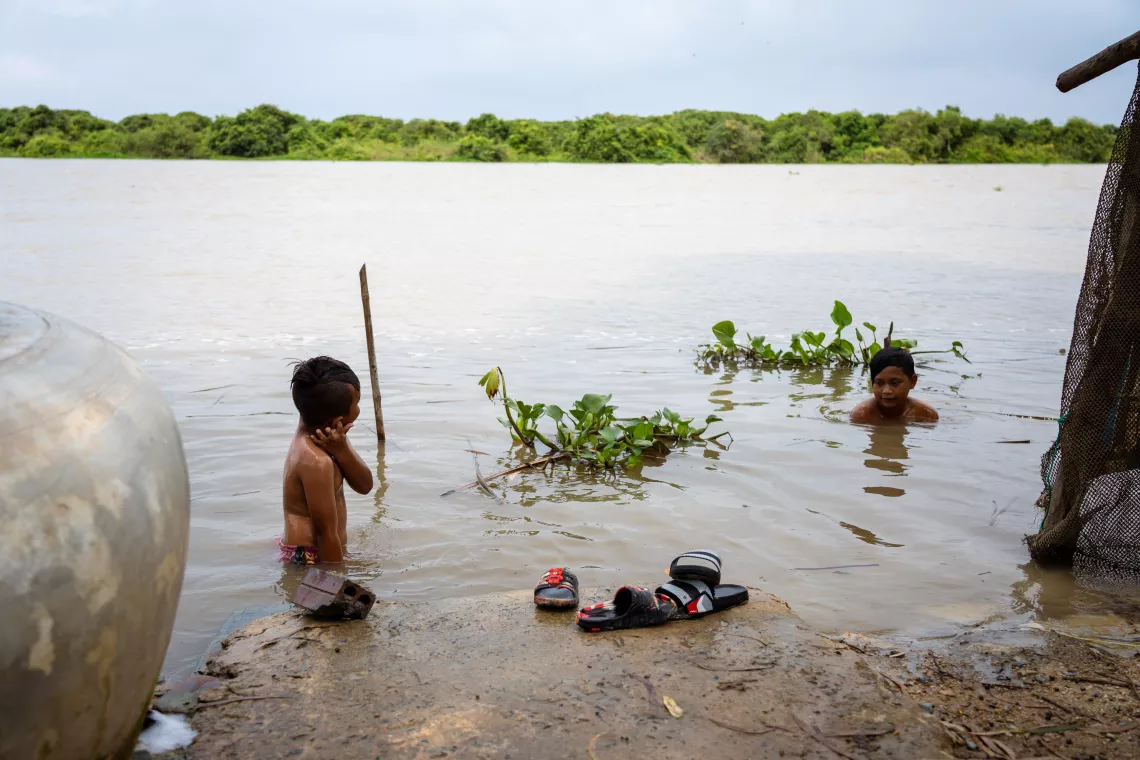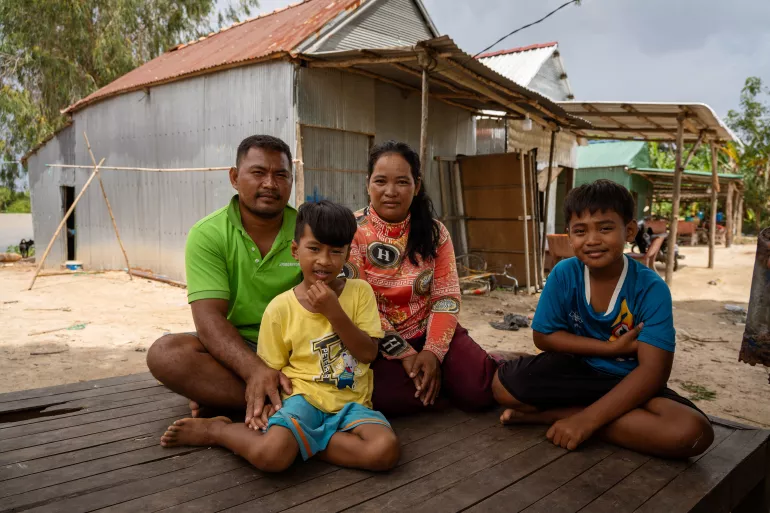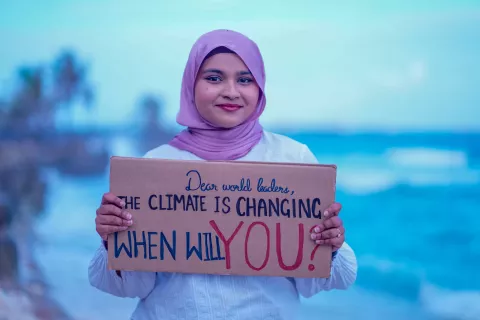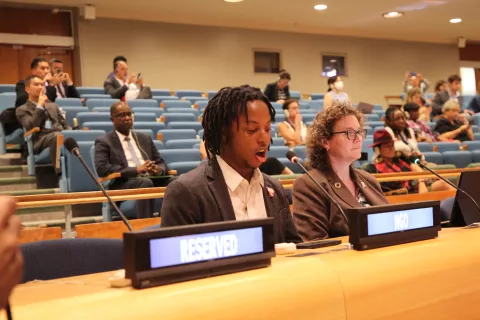“We were so worried,” remembers Sok Mom, looking in the distance. Her two sons, Seyha and Vatana, had fallen badly sick with diarrhea. The nearest health centre was over 3 kilometres away, and with no road to get there, they rushed to reach it in a fishing boat.
Mom and her boys live on the edge of a tributary of the mighty Mekong River in Cambodia, their fragile home mere inches from the lapping water of the river. Their lives and livelihood have always been intimately intertwined with the water. “The river gives us water. It gives us fish. It’s our way of getting around.”
But this vital lifeline for Mom’s family is increasingly threatened by climate change and infrastructure development. The impacts are wide-ranging, impacting fishing, rice farming and – most worryingly for Mom - her children’s health.
“The dry season is longer and hotter than ever,” says Mom. Takeo province is now one of the driest places in Cambodia, and water levels on the Mekong can drop by almost half during the dry season, when temperatures also soar up to 40 degrees.
And what’s left of the water isn’t always clean – it’s muddied, contaminated by the faeces of bathing water buffalos, and littered with trash from households and boats. A shocking 37,000 tons of plastic are discharged from the Mekong Delta every year. Families can spend hours fetching and then treating water at home, robbing them of precious time – including time that their daughters could spend on school.
Last year, floods seeped into their house, with water reaching up to her younger son’s waist.
The rainy season, which stretches from May to October, provides little relief. “The rainy season is becoming more and more unpredictable,” Mom says. “We never know what the water level will be.” Last year, floods seeped into their house, with water reaching up to her younger son’s waist. Floods and other extreme weather events make it harder and harder to access clean water, especially for the most vulnerable children.
It's the tail end of the rainy season when I meet Mom and her husband Ty Sovann, and they’ve been up since 3am, when they first headed out to fish. When the dry season begins, they’ll head to the nearby rice paddies instead. They have no source of livelihood which doesn’t depend on the health of the river. And the increasingly unreliable water supply, they tell me, means the price of rice can fluctuate drastically – making it harder to meet the basic needs of their children all year round.
But the health of Seyha and Vatana is what worries them most. Diarrhoea can be life threatening for young children. Other children in the neighborhood have suffered from skin diseases due to unclean water. Waterborne illness remains frighteningly common in Cambodia, where 1 in 4 people in rural areas still uses water from sources which may not be safe.
Today, there’s a road that connects the riverside homes to the health centre and to a primary school. It’s dotted by small shrines, zinc sheeted houses, and the occasional papaya tree. With UNICEF’s support, a water supply system has been laid along the new road, delivering safe, clean water to families all year round.
The family now uses the new water point in their courtyard for drinking and cooking. “The boys’ health immediately improved when we got clean water,” says Sok Mom. “They’re no longer getting sick as often.”
The system is designed to be climate-smart, able to withstand both floods and droughts and continuously deliver safe water to families. So far, by partnering with the private and public sectors, UNICEF has provided safe, clean water to over 100,000 people in Cambodia.

The lives of Sok Mom, Seyha and Vatana have improved. But their story of vulnerability from the banks of the Mekong lives on through the lives of millions of other families across the world. Worldwide, around 450 million children live in areas of high or extremely high water vulnerability. In East Asia and the Pacific, 1 in 5 children are exposed to water scarcity. Reducing water vulnerability for children in a climate-changed world will mean taking much stronger action, including in national adaptation plans.
Seyha and Vatana are splashing in the river when I leave. During the daytime, staying inside their zinc sheeted house is hardly bearable. It’s scorching inside, and the heat will only drop to livable levels sometime during the night.
Eliane Luthi is Regional Chief of Advocacy and Communication for East Asia & Pacific, UNICEF.





